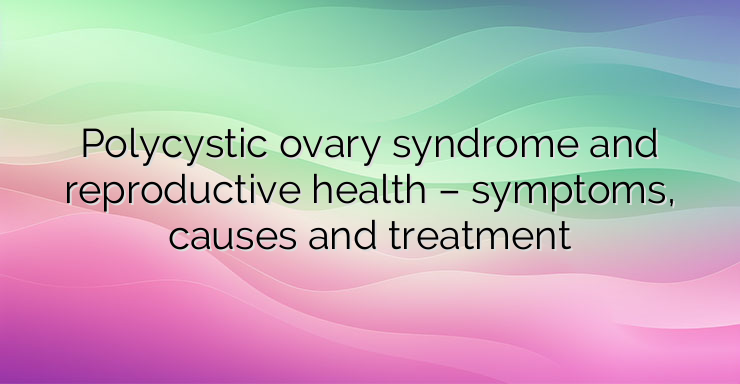Polycystic ovary syndrome is the most common hormonal disorder in young women, affecting 5 to 10%. This is the main cause of menstrual cycle and fertility disorders in women. What is polycystic ovary syndrome? Polycystic ovary syndrome – PCOS is not a disease associated with the formation of cysts, as the name suggests. In fact, the basis of the disease is the formation of small follicles that are formed in the ovaries, but in too large a number. Only a small part of them reach maturity and this often leads to menstrual cycle disorders. In polycystic ovary syndrome, male hormones – androgens – change the growth of these follicles and make them visible on ultrasound. They look black, like cysts. Hence the confusion when this syndrome was first observed. Symptoms The origin of this syndrome is not yet fully known. In no small measure, it is due to excessive production of male hormones – androgens. These androgens change the growth of follicles and this affects ovulation, which becomes irregular and this leads to problems with menstruation – irregular menstrual cycles. In some women, these androgens produced in excess can lead to the following manifestations: Acne; Excessive hair growth and hair growth – hirsutism; Hair loss. However, the symptoms of polycystic ovary syndrome can be very different. Diagnosis The diagnosis is based on the presence of at least 2 of the following 3 criteria: The presence of hyperandrogenism – clinical or biological: excessive secretion of male hormones, which leads to the appearance of characteristic male features; Menstrual disorders that indicate problems with ovulation: when ovulation no longer occurs (anovulation) or occurs very rarely, this causes amenorrhea – absence of menstruation; Ovarian follicles visible on ultrasound: visibility is due to their large volume – more than 10 ml, or their large number – more than 12, in at least one of the two ovaries. The dose of the hormone secreted by these follicles – Anti-Müllerian hormone – AMH also gives a good reflection of the number of follicles that the ovaries contain. The diagnosis is also based on the exclusion of other diseases that may have similar symptoms – tumors, problems with the secretion of corticosteroids and others. Treatment Symptomatic treatment Some therapeutic approaches can improve specific symptoms. In case of acne or excessive hair growth, an estrogen-progestogen contraceptive drug can be prescribed to restore the hormonal balance, provided that there is no desire to become pregnant at this time. Specific medications can also be prescribed to reduce male hormone levels. Weight control Some women with this syndrome are overweight. Obesity and insulin resistance promote symptoms and can reduce fertility. This is why in the case of PCOS,associated with excess weight, certain lifestyle and nutritional measures are applied. Weight loss of 5 to 10% can sometimes almost completely restore a normal menstrual cycle and restore ovulation. Oral antidiabetic agents can be used for problems with insulin resistance. Ovulation induction If the fertility problem is due to ovulation disorders, ovulation induction agents such as clomiphene citrate can be used. It is important to determine the dose that is needed for the specific case. Often a dose of 50 mg between days 2 and 6 of the cycle is sufficient to induce ovulation in 50% of patients. For the rest, the doses are increased gradually, up to a maximum of 150 mg. Only 30% of patients are resistant and do not respond to these doses and treatment. For those in whom clomiphene citrate works, pregnancy can occur in 60% of cases after 6 induction cycles. Hormonal injections Injectable gonadotropins – FSH can be used. Injection of these hormones can restart the production of follicles in the ovaries, which will be able to produce mature eggs. Effective stimulation of ovulation through the use of these means is preceded by ultrasound and hormonal studies to avoid the risk of overstimulation of the ovaries and multiple pregnancy. References: https://www.doctissimo.fr/html/grossesse/avant/fertilite/articles/10106-ovaires-polykystique-risques-fertilite.htmfr/html/grossesse/avant/fertilite/articles/10106-ovaires-polykystique-risques-fertilite.htmfr/html/grossesse/avant/fertilite/articles/10106-ovaires-polykystique-risques-fertilite.htm


Leave a Reply